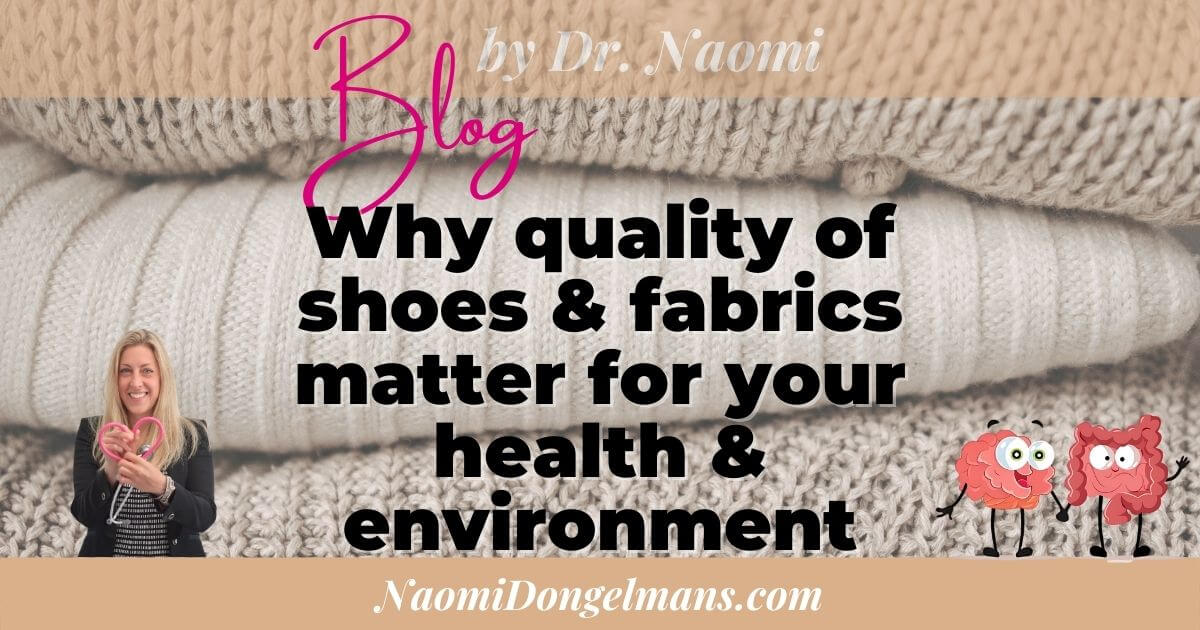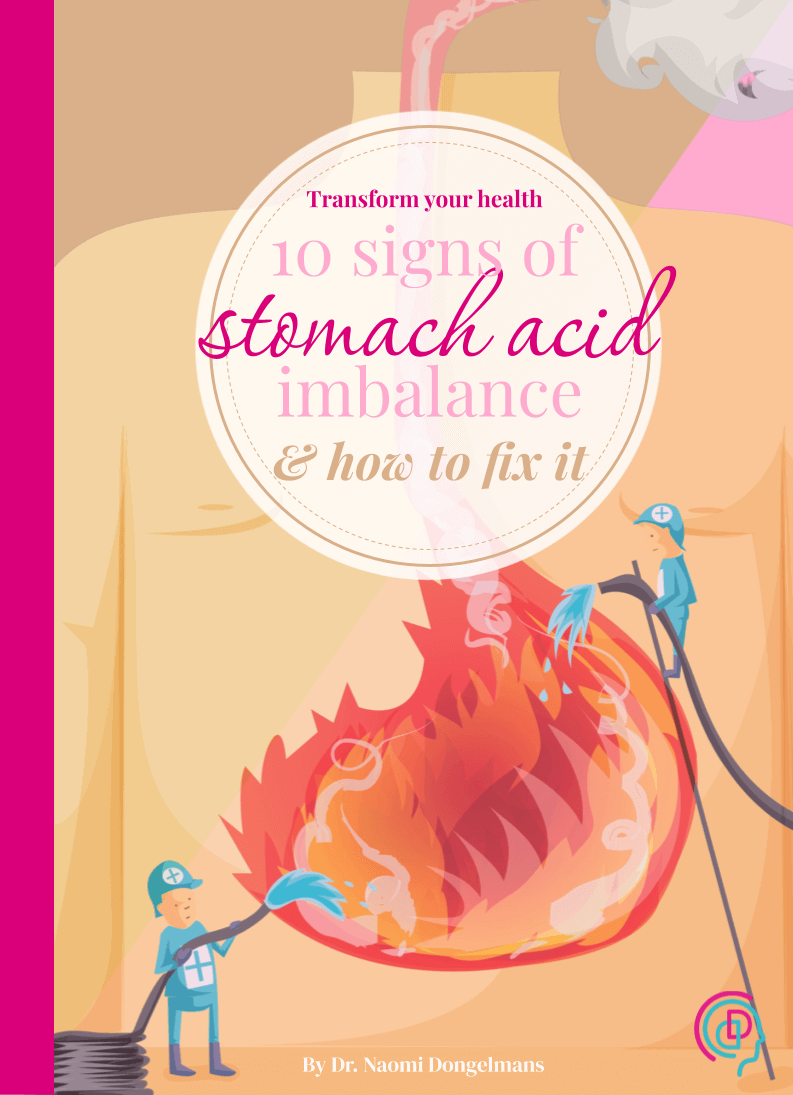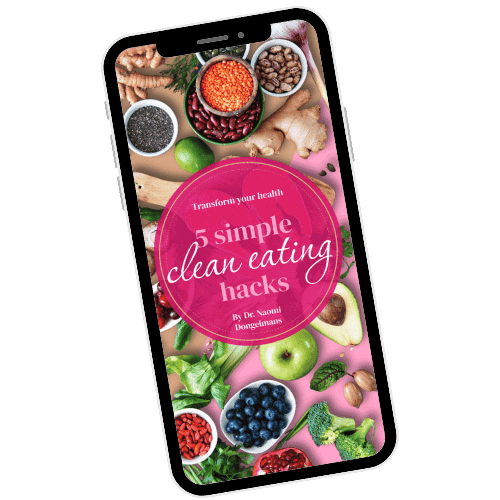
As an integrative medical doctor focusing on gut health, I often surprise my patients when I start talking about their shoes and clothing. But there's a crucial connection that many people overlook. Let me share what I've learned about the impact of material quality on our health, starting with a personal story.
Index
- Introduction
- The hidden health impact of poor materials
- Natural fibres vs. synthetic materials
- Environmental impact of materials
- Raising awareness
- Towards sustainable solutions
- Conclusion
From personal experience to professional concern
The hidden health impact of poor materials
Let me share something that deeply concerns me: I often see people throwing away perfectly good wool garments in clothing bins, only to replace them with synthetic alternatives. What many don't realize is that wool is one of nature's most remarkable materials. In my practice, I frequently see patients wearing synthetic materials, completely unaware that the wool sweater they just discarded was actually a healthier choice.
While a quality wool garment might cost over a hundred euros, there's a good reason for this. Wool offers incredible benefits that synthetic alternatives simply cannot match, no matter how hard manufacturers try to replicate them:
- Natural temperature regulation - keeping you warm in winter and cool in summer
- Self-cleaning properties - wool naturally repels dirt and odors
- Fire-resistant without any chemical treatments
- Water-repellent thanks to natural lanolin
The irony is that people often discard wool items thinking they're old-fashioned or high-maintenance, only to replace them with synthetic materials that require chemical treatments to achieve even a fraction of wool's natural properties. What's even more concerning is that these synthetic alternatives often end up in landfills within a year or two, while a well-cared-for wool garment could last for decades.
The real value of natural materials
When patients tell me they've thrown away wool clothing because it "looked old" or "needed special care," I explain how wool's natural properties make it not just a piece of clothing, but an investment in their health. A real wool sweater adapts to your body temperature, allows your skin to breathe, and doesn't need the harmful chemical treatments that synthetic materials require.
Natural fibres vs. synthetic materials
Let us delve into silk, which, like wool, offers insulating properties but is also animal-derived and can be relatively costly. In contrast, cotton has options for organic farming. Consumers should be willing to invest in sustainable options while avoiding overstuffed wardrobes.
Other materials like linen, hemp, and viscose are available, but it is crucial to note that viscose often gets blended with various other materials, complicating recycling efforts.
Environmental impact of materials
Many of these natural materials are beneficial for adapting to environmental conditions; however, the incorporation of dyes, zippers, buttons, and chemical additives diminishes their recyclability.
- Moreover, the troubling trend of glitter—often made from metal or plastic—presents additional challenges. These tiny particles are notoriously difficult to filter from drinking water and can become lodged in lung tissues when inhaled.
- It is concerning to note the presence of glitter in baby clothes, toys, and school supplies, raising potential health risks.
Raising awareness
In our throwaway society, where quick replacements are commonplace, we neglect the true cost associated with these choices. While vegan shoes might sound like an ethical choice, most are primarily made from plastic. These materials usually contain phthalates - harmful chemicals that can disrupt our hormonal system and are linked to various health issues including:
- Autoimmune conditions
- Fertility problems
- Increasing allergies
- Hormonal imbalances
What many people don't realize is that our feet are excellent at absorbing substances - including these harmful chemicals. This is why several recalls of slippers from China have occurred due to excessive phthalate content. When we wear plastic shoes daily, these substances can enter our bloodstream through our feet.
A better approach
Quality leather shoes, when sourced from well-treated animals, can last for many years. Yes, they require a larger initial investment, but consider this: if you divide the cost by the years of use, they often work out cheaper than repeatedly buying low-quality alternatives. More importantly, they're better for your health and create less waste.
Towards sustainable solutions
I believe that raising consumer awareness on these issues is essential for encouraging better purchasing decisions that prioritise quality over quantity. Everything we use derives from natural resources, and the production of all goods—regardless of what they are—uses precious clean water.
 My upcoming 4-week course on sustainable materials and toxin-free living aims to educate participants about making informed choices regarding the materials used in their clothing, footwear, and everyday items.
My upcoming 4-week course on sustainable materials and toxin-free living aims to educate participants about making informed choices regarding the materials used in their clothing, footwear, and everyday items.
- By joining this course, participants can explore healthier materials, their impacts on human health and the environment, and practical strategies for making mindful selections that contribute to a sustainable future.
- Join us at pxl.to/toxinfree to embark on a journey toward innovative, healthier solutions that respect our planet and enhance our well-being.
Conclusion
In conclusion, the materials we choose for our shoes and fabrics significantly impact our health and the environment. By making conscious decisions to prioritise quality and sustainability, we can foster a healthier and more responsible future.





























0 Comments